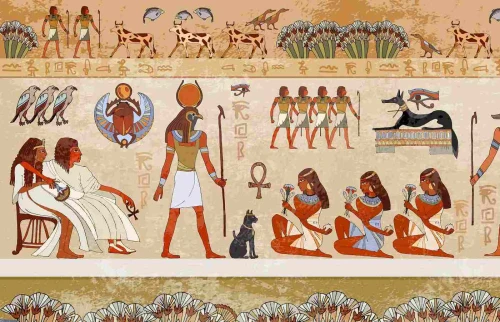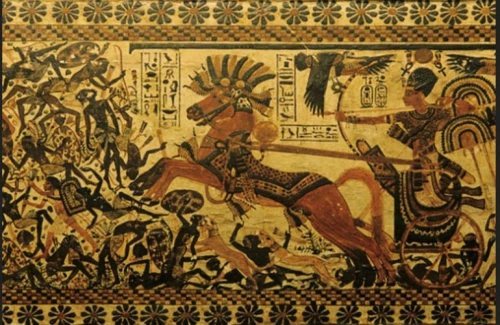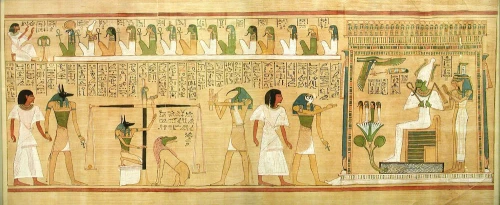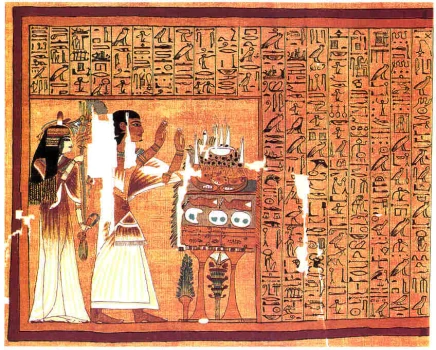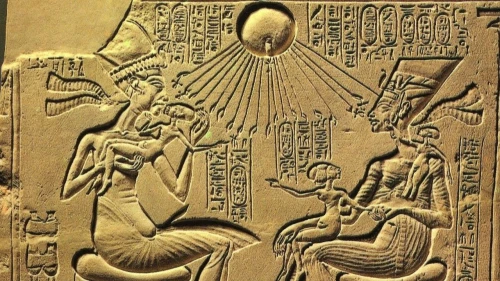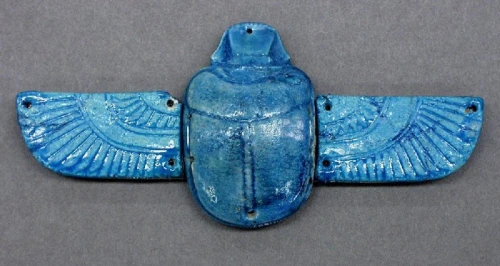
FAIENCE The ancient Egyptians called it tjehnet, "meaning that which is brilliant". When Egyptian craftsmen discovered how to create faience, they must have thought it was a gift from the gods. Faience (pronounced fay-ahns) is one of the ancient world's most beautiful and prized ceramics.
The Egyptians used faience for everything beads, amulets, ushabtis, sistra, cups, vases, bowls, figurines, and decorative inlays for furniture. While the basic ingredients, water, and sand, are common materials in Egypt, the final product was pure magic almost an alchemical process transforming base materials into brilliant colors.
The bright blue and green colors were the most popular, for they imitated turquoise and lapis lazuli, semiprecious stones popular from prehistoric times and believed to have magical qualities. One of the earliest examples of faience used on a large scale can be found in the chambers beneath the Step Pyramid of Zoser. The walls are lined with This blue faience hippopotamus is 4½ inches tall and is decorated with aquatic plants that grew in the marshy areas around the Nile. Discovered in the tomb of a nobleman from the Twelfth Dynasty, the hippopotamus is now in the Metropolitan Museum of Art in New York City.
hundreds of pale green faience tiles that measure about two inches by four inches. Faience is a mixture of ground quartz, or sand with a high quartz content, a little lime or natron, and water. A variety of colors can be produced depending on what pigment is added to the paste.
Faience is pressed into terra-cotta molds thousands of molds in different shapes have been found. When the faience is fired in a kiln, the glaze migrates to the surface, leaving a brightly colored, smooth, glassy surface. Faience was inexpensive to produce, and given the number of faience objects found, it seems that most Egyptians had a protective amulet, good luck charm, or statues of their favorite gods in their homes. Thousands of faience statuettes of the gods were made each year to be left as votive offerings in the temples. Faience amulets were created to be worn by the living and to adorn and protect the deceased.
 English
English
 Spain
Spain

